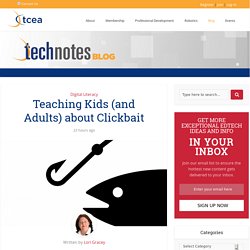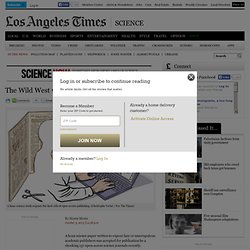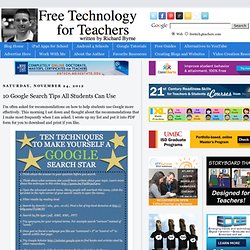

Teaching Kids (and Adults) about Clickbait - TechNotes Blog - TCEA. As if email spam wasn’t bad enough, we now have website spam in the form of clickbait.

Learn some ways to identify and then ignore this big time waster. I noticed something happening on my Facebook the other day. Suddenly, I was getting a lot of “sponsored stories” (ie. ads) with salacious headlines. Things like “Stop eating chicken breasts immediately!” And “You won’t believe what this famous star has become.” What Is Clickbait? According to Wikipedia, clickbait is a term for “web content that is aimed at generating online advertising revenue, especially at the expense of quality or accuracy, relying on sensationalist headlines or eye-catching thumbnail pictures to attract click-throughs and to encourage forwarding of the material over online social networks.”
There are several parts of that definition that jumped out at me. Why Clickbait Is So Dangerous I think all of us can agree that clickbait is something that we wish didn’t exist. What You Can Do The headline is too good to be true. Students as Journalists: Combating the Fake News… January 10, 2017 Media reporting around the world has changed.

Anyone with a recording device can disseminate news, whether the news is true or false. But simply recording video or posting a blog does not make one a journalist, nor does it make the media they distribute true. Journalism requires ethics, critical analysis, judgment, and training. All too often during the past year, we have seen countless examples of “fake” news create what many people are now referencing as a “post-truth” world.
As journalism evolves and facts become blurred, it’s imperative for educators to embrace the principles of media literacy. The YouTube Generation A 2016 Newsela article shared the results from an annual study on the digital behavior of children ages six to twelve, conducted by the Smarty Pants group. I recently hosted a PBS Education webinar challenging educators to develop their students as journalists. Don is a high school multimedia instructor from St. 10 Ways to Spot a Fake News Article - EasyBib Blog. For many of us, 2016 is going down as a year to forget.

Election upsets, Zika, the Syrian crisis, and unfortunately tons of fake news about all of the above and everything in between. Denzel Washington was recently quoted as saying, “If you don’t read the newspaper, you’re uninformed. If you do read the newspaper, you’re misinformed.” So what should you do? You want to be informed, but a good deal of the information out there is incorrect or biased. 1. Links and citations allow us to easily access, read, and explore more about the information found in the article. Many big name news sites, such as CNN, do not include links or citations, but other sites do. 2.
An article without an author’s name is another red flag. 3. Do a Google search on the author’s name to find their occupation and locate other articles that the author has composed. 4. On the top or bottom of most websites, you should see a section titled “About Us.” Dihydrogen Monoxide Research Division - dihydrogen monoxide info. Admongo.gov.
The Domestic Surveillance Directorate. Welcome to the National Security Agency - NSA/CSS. The Wild West world of open-access journals. A hoax science paper written to expose lazy or unscrupulous academic publishers was accepted for publication by a shocking 157 open-access science journals recently.

In a sting operation conducted by the journal Science, contributing correspondent John Bohannon uncovered a "Wild West" landscape among fee-seeking publishers -- a portion of which use false addresses, false names, overseas bank accounts and superficial "peer reviews" on a routine basis. "From humble and idealistic beginnings a decade ago, open-access scientific journals have mushroomed into a global industry, driven by author publication fees rather than traditional subscriptions," wrote Bohannon, a molecular biologist and science reporter.
"Most of the players are murky," he wrote. "The identity and location of the journals' editors, as well as the finacial workings of their publishers, are often purposefully obscured. " Despite these and other problems, a whopping 157 journals accepted it; only 98 rejected it. The Teacher Tap: Professional Development Resources for Educators. TRAILS: Tool for Real-time Assessment of Information Literacy Skills.
10 Google Search Tips All Students Can Use. I'm often asked for recommendations on how to help students use Google more effectively.

This morning I sat down and thought about the recommendations that I make most frequently when I am asked. I wrote up my list and put it into PDF form for you to download and print if you like. A few things about the PDF. The list is not detailed (I wanted to keep it to one page) so you may have to show your students how to do some of the things on it. There is a link to Google Search Lesson plans in the bottom left corner of the page. Techniques Google Search Star. Information Literacy Resources.